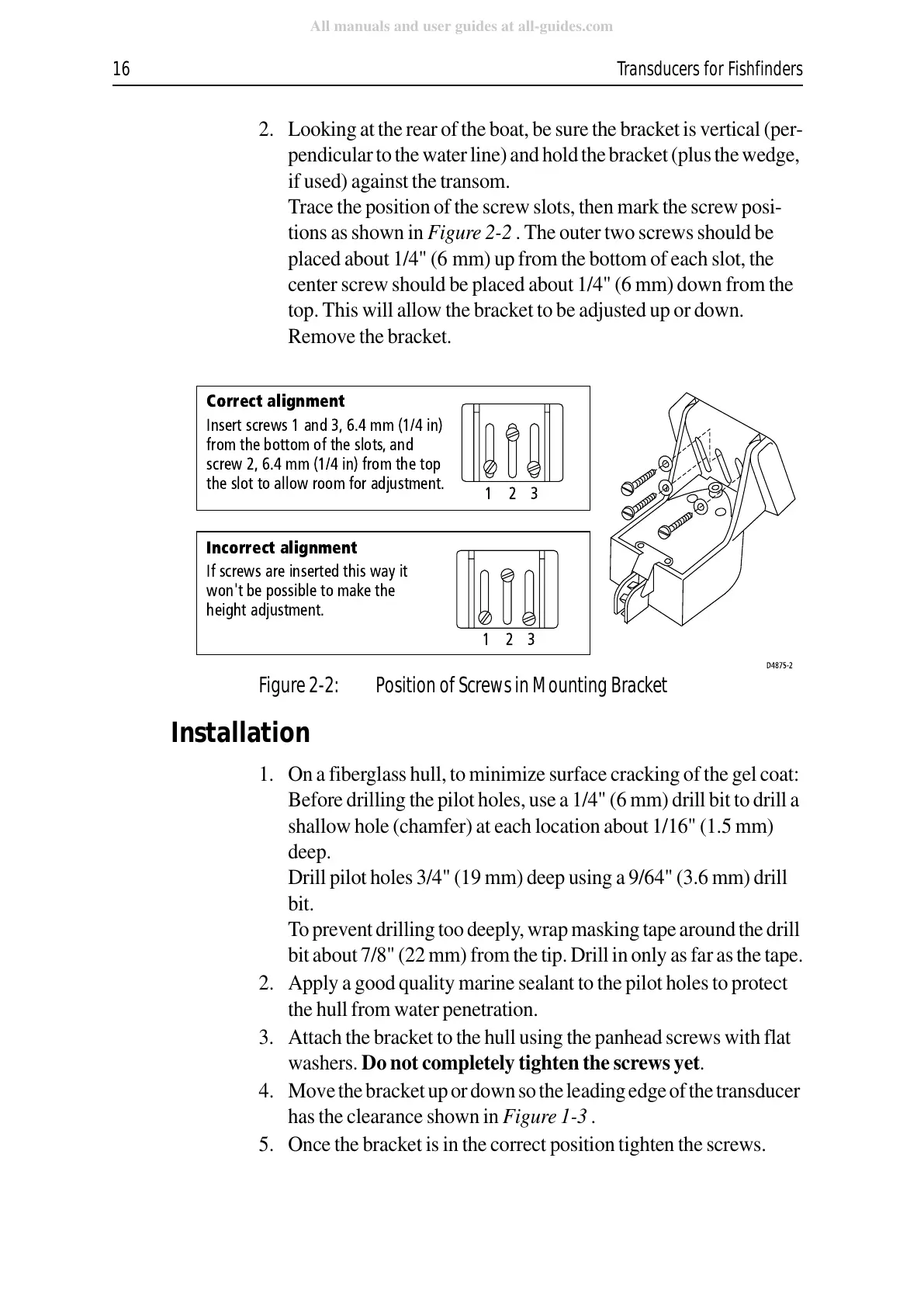16 Transducers for Fishfinders
2. Lookingat the rear of the boat, be sure the bracket is vertical (per-
pendiculartothewaterline)andholdthebracket(plusthewedge,
ifused) againstthe transom.
Trace the position of the screw slots, then mark thescrew posi-
tions asshown in Figure 2-2 . The outertwo screws should be
placed about 1/4" (6 mm) up from the bottom of each slot, the
center screw should be placed about 1/4" (6 mm)down from the
top. This will allow thebracket to be adjusted up or down.
Remove the bracket.
Figure 2-2: Position of Screws in Mounting Bracket
Installation
1. On a fiberglasshull, to minimize surface cracking of the gel coat:
Before drilling the pilot holes, use a 1/4" (6 mm) drill bit to drill a
shallow hole (chamfer) at each location about1/16" (1.5 mm)
deep.
Drill pilot holes 3/4" (19 mm) deep using a 9/64" (3.6 mm) drill
bit.
To preventdrillingtoodeeply,wrapmaskingtapearoundthedrill
bitabout7/8" (22mm) from thetip.Drill inonly as faras thetape.
2. Apply a good quality marine sealant to the pilot holes to protect
the hull from water penetration.
3. Attach the bracket to the hull using the panhead screws with flat
washers. Do not completely tighten the screws yet.
4. Movethebracketupordownsotheleadingedgeofthetransducer
has the clearance shown in Figure 1-3 .
5. Once the bracket is in the correct position tighten the screws.
D4875-2
Insert screws 1 and 3, 6.4 mm (1/4 in)
from the bottom of the slots, and
screw 2, 6.4 mm (1/4 in) from the top
the slot to allow room for adjustment.
If screws are inserted this way it
won't be possible to make the
height adjustment.
1
Correct alignment
Incorrect alignment
23
123

